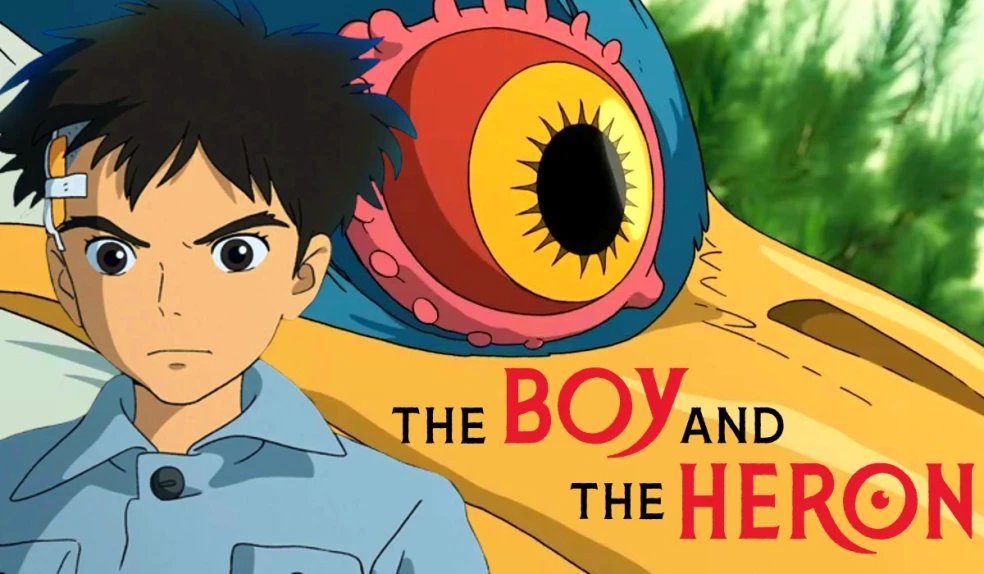Miyazaki’s latest film asks How Do You Live?
Note: Contains spoilers.

On September 7, the Toronto International Film Festival (TIFF) opened with Studio Ghibli’s highly anticipated The Boy and the Heron (2023), directed by Hayao Miyazaki.
Hayao Miyazaki is an animator, a filmmaker, and a co-founder of Studio Ghibli, a prominent Japanese animation studio. Miyazaki made his directorial debut with The Castle of Cagliostro (1979) and is behind beloved animated favourites such as My Neighbour Totoro (1988), Spirited Away (2001), and Howl’s Moving Castle (2004). The Boy and the Heron marks Miyazaki’s long-awaited return since his previous film The Wind Rises (2013).
TIFF describes The Boy and the Heron as an “especially precious gift” before Miyazaki’s retirement. It was initially announced as an adaptation of Genzaburo Yoshino’s novel How Do You Live?, from which it derives its Japanese title, Kimitachi wa Do Ikiru ka (translated: “How Do You Live?”). Now, the premise of the novel instead serves as one of many layers within the film, which also draws upon Miyazaki’s own youth in Japan during the Second World War.
The Boy and the Heron’s official logline reads: “A young boy named Mahito longing for his mother ventures into a world shared by the living and the dead.” Mahito Maki (Soma Santoki) loses his mother and moves to the countryside with his father (Takuya Kimura) to live with his mother’s sister and his father’s new wife, Natsuko (Yoshino Kimura). Suffering from grief and loneliness, Mahito explores the landscape, where he encounters a persistent grey heron (Masaki Suda) who leads him to an abandoned tower and the fantastical world within.
The Boy and the Heron showcases Miyazaki’s signature talent for beautiful world-building through both narrative and technical aspects. From the outset, the film masterfully forms a heartfelt connection between the audience and Mahito through the nuanced display of his emotional vulnerability. The first act evokes a sense of wonder regarding the mystical realm within the abandoned tower created by Mahito’s mad great-uncle and the anthropomorphic heron-man. As Mahito ventures through the mystical realm, he encounters magical characters, such as giant parakeets, all of which contribute to the film’s “phantasmagoria.”
The film excellently weaves whimsicality and lightheartedness throughout its narrative which brings levity to heavier themes. For instance, the “warawara” are adorable white balloon-like entities that become the souls of future humans.
While The Boy and the Heron is fantastical, it is also deeply rooted in the socio-cultural context of Japan during the Second World War. Mahito’s father is shown working, in some capacity, for the Japanese military building fighter jets. Through his storytelling, Miyazaki explores the complexities of history, society, and the human condition, making his films simultaneously entertaining and thought-provoking.
Unfortunately, the second act falters, as it is bogged down with an overstuffed narrative that struggles to juggle too many themes. The storyline is laden with a plethora of details and metaphors which are not satisfactorily unravelled, and the storyline ultimately loses its narrative thread. The film’s attempt to pack numerous elements into its two-hour runtime makes it feel drawn-out and overwhelming to digest. Some scenes flow seamlessly despite quick transitions, such as when Mahito encounters his great-uncle in search of Natsuko in the abandoned tower. However, the latter half’s scenes feel more abrupt, demonstrating an overall ambitious complexity and making the film lack narrative cohesion.
Perhaps How Do You Live? could have been a fitting title, as the film begs the audience to question how one should move on from their grief while contributing to the harmony of their current world. The film deeply explores poignant themes of trauma, change, and grief, particularly focusing on the profound pain of losing a parent and the extraordinary lengths one is willing to go to for a chance at reunion. Mortality, loneliness, and isolation also play central roles in the narrative, making for an emotionally charged viewing experience. However, at times, the heavy-handed metaphors seem unnecessary to carry out the message and spell out themes. Miyazaki’s other works demonstrate that subtle inclusion of a theme throughout a film may be more poignant than, for instance, the overt use of literal building blocks to depict the balance of the great-uncle’s delicate world.
The Boy and the Heron’s animation is nothing short of phenomenal, a hallmark of Studio Ghibli’s iconic work. The beautiful animation breathes life into the story through immersive worlds filled with magical creatures, lush landscapes, awe-inspiring architecture, and mouth-watering food. The deliberate and intentional use of colour throughout the film is not only visually stunning but also emotionally evocative. The opening scene stands out in particular: as Mahito runs towards his mother, he remains in focus while the background lines and colours blur amongst the striking flames and smoke, forming a tragically beautiful backdrop, almost as if the animation is struggling to catch up with Mahito.
As is typical in Miyazaki’s work, the soundtrack composed by Joe Hisaishi is outstanding. The music perfectly complements every scene while enhancing the emotional impact of key moments, drawing viewers deeper into the film’s world and complementing Mahito’s literal and emotional journey to great effect.
The Boy and the Heron was released in Japan in July, where it has already been “acclaimed as a masterpiece.” The film is scheduled to release in North American theatres on December 8, 2023.
While The Boy and the Heron may not reach the storytelling heights of some of Miyazaki’s more celebrated films, it nevertheless weaves a visually stunning world filled with universal themes, accompanied by a charming and atmospheric soundtrack. For fans of Miyazaki’s trademark brand of animation and storytelling, it is well worth a watch.





